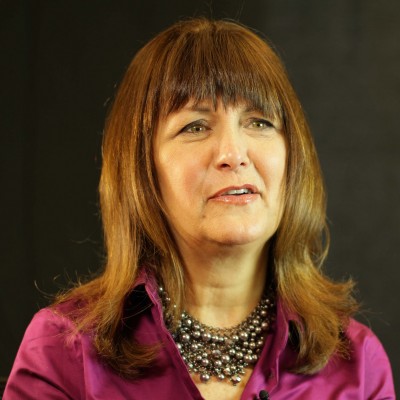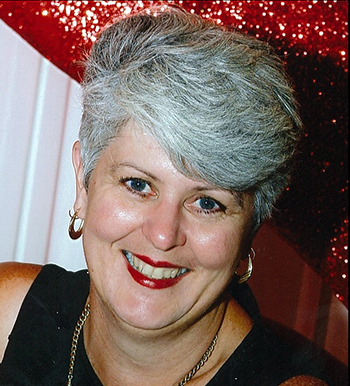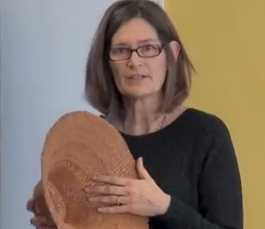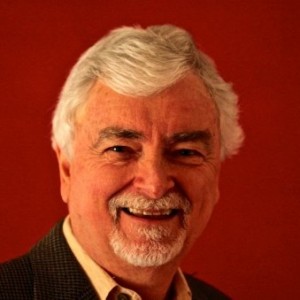New Publication from Dr. Hymel – Status Differences in Target-Specific Prosocial Behavior and Aggression
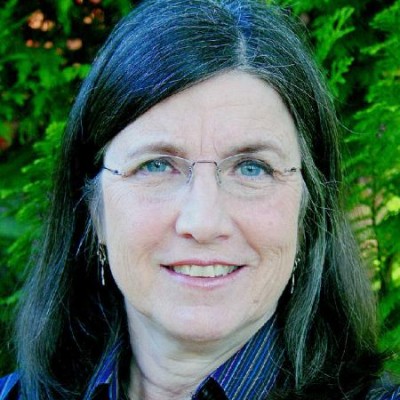
Dr. Shelley Hymel
Department of Educational and Counselling Psychology, and Special Education
Abstract: Previous studies exploring the link between social status and behavior have predominantly utilized measures that do not provide information regarding toward whom aggression or prosocial behavior is directed. Using a contextualized target-specific approach, this study examined whether high- and low-status adolescents behave differently toward peers of varying levels of status. Participants, aged 11–15 (N = 426, 53 % females), completed measures assessing aggression and prosocial behavior toward each same-sex grademate. A distinct pattern of findings emerged regarding the likeability, popularity, and dominance status of adolescents and their peer targets. Popular adolescents reported more direct aggression, indirect aggression, and prosocial behavior toward popular peers than did unpopular adolescents. Well-accepted adolescents reported more prosocial behavior toward a wider variety of peers than did rejected adolescents. Finally, compared to subordinate adolescents, dominant adolescents reported greater direct and indirect aggression toward dominant than subordinate peers. The results highlight the importance of studying target-specific behavior to better understand the status-behavior link.
Read More: http://link.springer.com/article/10.1007/s10964-016-0481-7
Closson, L. M., & Hymel, S. (2016). Status Differences in Target-Specific Prosocial Behavior and Aggression, Journal of Youth and Adolescence, Advanced Online Publication.
Click here to access the article.
New publication from Dr. Tan – Reflecting upon researchers’ and policy-makers’ tensions in the collaborative inquiry process: ‘what do different commonplaces contribute to curriculum deliberation?’

Dr. Michelle Tan
Department of Curriculum and Pedagogy
Abstract: This collaborative inquiry, as part of action research, is framed within the unique context of two researchers working closely alongside two policy-makers (research collaborators) to explore how teachers could enter more profoundly into a curriculum discourse. Drawing from Reid’s concept of curriculum deliberation as located within institutional settings, the inquiry was purposed to elucidate physical education teachers’ perceptions of outdoor education (OE), in order to integrate the teachers’ perspectives within the first formal OE curriculum implementation in Singapore. This article reflects upon tensions that emerged in our inquiry process; these reflections were noted in journal entries, audio-recordings and notes of meetings and teacher seminars, as well as teachers’ interview transcripts. We, the researchers, employed a conceptual change framework to identify and confront the tensions, and consequently searched for further clarification and alternative ways of interpreting the tensions. In transforming the tensions into our positive learning experiences, we co-generated new knowledge through renewed understandings developed with our Ministry of Education research collaborators who were directly involved in the conceptualization and implementation of the new curriculum. The tensions include teachers’ gaps in understandings of OE; concern that the current project findings may be ‘too late’ to influence the design of the new curriculum; and power differences existing between researchers, policy-makers and teachers. Our reflections invoked deliberation about the teachers’ contribution of knowledge to inquiry and curriculum deliberation processes. We illustrated how such a deliberation could not be divorced from critical examination of the roles of, and kinds of knowledge contributed by, policy-makers and researchers.
Read More: http://www.tandfonline.com/doi/abs/10.1080/09650792.2016.1173565
Tan, M., & Atencio, M. (2016). Reflecting upon researchers’ and policy-makers’ tensions in the collaborative inquiry process: ‘what do different commonplaces contribute to curriculum deliberation?’, Educational Action Research, Advanced Online Publication.
Click here to access the article.
New Publication from Dr. Faulkner – Baseline risk has greater influence over behavioral attrition on the real-world clinical effectiveness of cardiac rehabilitation

Dr. Guy Faulkner
School of Kinesiology
Abstract:
Objective: Few studies have examined the correlates of real-world cardiac rehabilitation (CR) effectiveness. The objective of this study was to determine the relationship between baseline risk, behavioral attrition, and the number needed to treat (NNT) associated with CR.
Study Design and Setting: A retrospective study was conducted among 16,061 CR patients between 1995 and 2011 in Canada. Multiple logistic regression models were derived from patient characteristics and measured baseline risk (individual’s risk of death within 3 years) and behavioral attrition (individual’s risk of premature dropout). We examined the treatment efficacy of CR among nondropouts using a 20% relative risk reduction. Further sensitivity analyses were performed to assess the robustness of our assumptions. We assumed no efficacy among dropouts.
Results: Both baseline risk and behavioral attrition were independently associated with NNT, although baseline risk had a stronger association with NNT than behavioral attrition. Increasing age, lower baseline fitness, history of diabetes, hypertension, and greater comorbidities were associated with lower NNT. Being female, living alone, living in the lowest neighborhood income quintile, and greater adiposity were associated with higher NNT.
Conclusion: The clinical effectiveness of CR is largely driven by the baseline risk rather than the behavioral attrition of the populations they serve. These findings have implications for risk stratification among those with greatest survival yields and programmatic needs.
Read More: http://www.sciencedirect.com/science/article/pii/S0895435616300816
Biswas, A., Paul, I. O., Faulkner, G. E., & Alter, D. A.(2016). Baseline Risk has Greater Influence over Behavioral Attrition on the Real-World Clinical Effectiveness of Cardiac Rehabilitation, Journal of Clinical Epidemiology, Advanced Online Publication.
Click here to access the article.
New Publication from Dr. Ruitenberg – Ethics in Professional Education: Introduction to the Special Issue
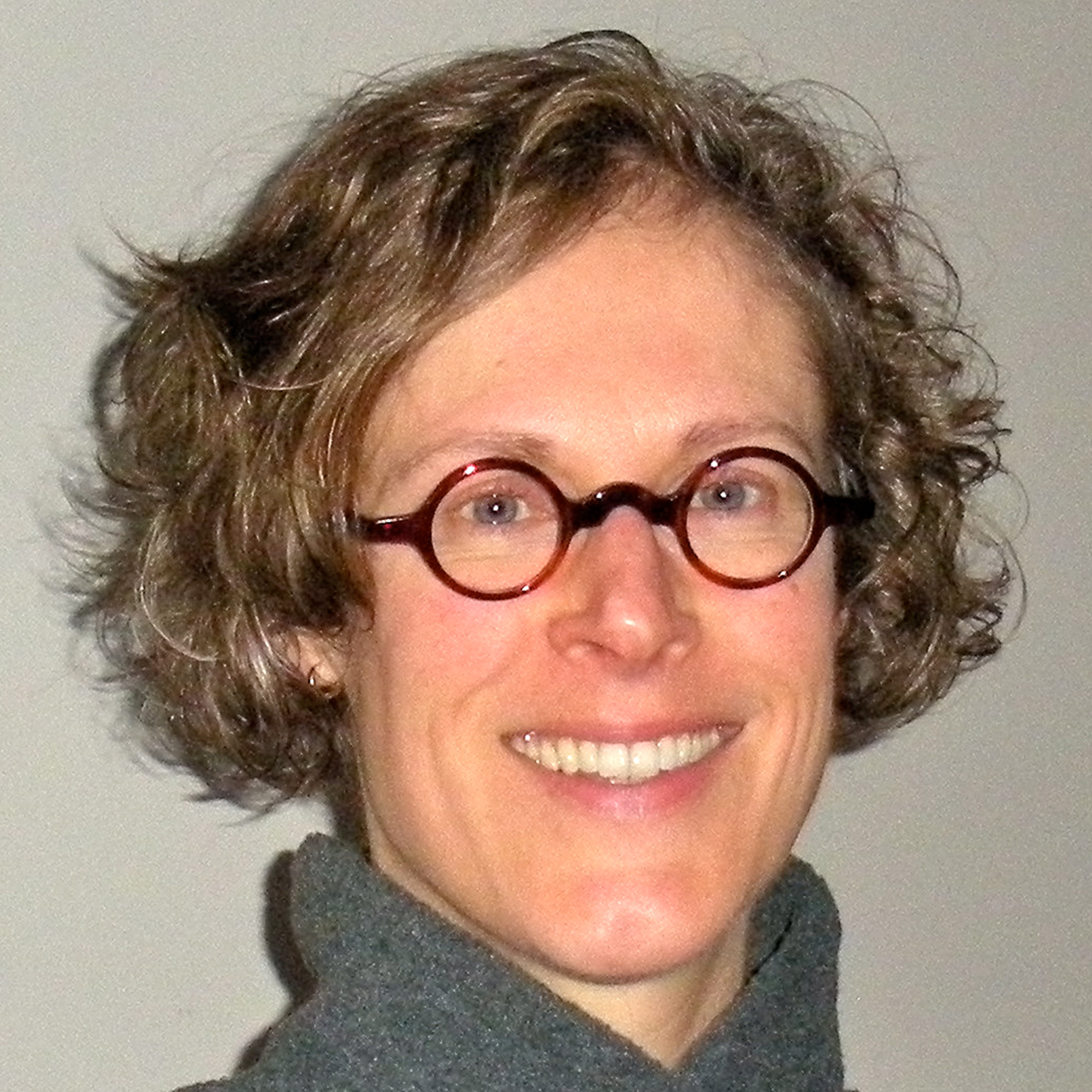
Dr. Claudia Ruitenberg
Department of Educational Studies
Read More: http://www.tandfonline.com/doi/full/10.1080/17449642.2016.1145493
Martin, C., & Ruitenberg, C. (2016). Ethics in Professional Education: Introduction to the Special Issue, Ethics and Education, 11:1, 1–4.
Click here to access the article.
New Publication from Drs. Warburton and Bredin – The Risk-Benefit Paradox of Exercise

Dr. Darren Warburton
School of Kinesiology
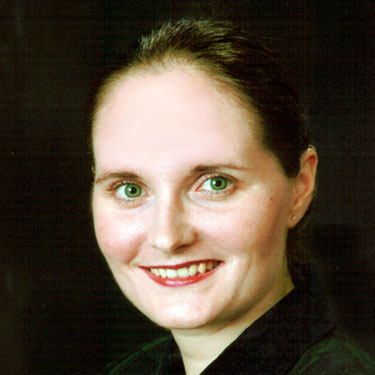
Dr. Shannon Bredin
School of Kinesiology
Abstract: A risk-benefit paradox applies when considering how much exercise is needed for good health. Vigorous exercise can transiently increase the short-term risk for an adverse event (such as a myocardial infarction or sudden cardiac death); however, participation in routine exercise can also markedly reduce the long-term risk for premature mortality and is an effective primary and secondary preventive measure for more than 25 chronic medical conditions. Active individuals often exhibit risk reductions of 50% or more for mortality and morbidity. An exercise dose-response relationship exists; with the greatest benefits seen when previously inactive individuals become more active. There may, however, be an attenuation of benefit at the extreme end of the exercise continuum (e.g., for ultra-endurance events). Prolonged strenuous exercise training or events have been associated with various risks, including sudden cardiac death, atrial and ventricular arrhythmias, and pathological remodeling of the myocardium. The optimum and minimum amounts of physical activity/exercise needed to achieve health benefits are disputed. Inactive individuals may be discouraged by recommendations for an amount of activity that seems unachievable and is greater than what is required for clinically relevant health benefits, while endurance athletes often exercise at levels and intensities well beyond what is needed to achieve health benefits. Current physical activity guidelines have been widely criticized because they do not include varied types and amounts of activities to address the diverse needs of society. There is strong evidence to support the need for individualized exercise prescriptions for patients, including varied recommendations for improving health-related physical fitness and functional status. Despite the risk-benefit paradox, it is clear that the health benefits of physical activity far outweigh the risks, and virtually everyone can benefit from becoming more physically active.
Read More: http://www.bcmj.org/articles/risk-benefit-paradox-exercise
Warburton, D. E. R., Taunton, J., Bredin, S. S. D., & Isserow, S. (2016). The Risk-Benefit Paradox of Exercise, BC Medical Journal, 58:4, 210–218.
Click here to access the chapter.
New Publication from Dr. Rocha – Untimely Phenomenological Research: Introduction to Heidegger and Education

Dr. Samuel Rocha
Department of Educational Studies
Read More: http://www.tandfonline.com/doi/full/10.1080/00131857.2016.1165010
Rocha, S. D. (2016). Untimely Phenomenological Research: Introduction to Heidegger and Education, Educational Philosophy and Theory, Advanced Online Publication, 1-3.
Click here to access the article.
New Publication from Dr. Gleason – The Land is my School: Children, History, and the Environment in the Canadian Province of British Columbia

Dr. Mona Gleason
Department of Educational Studies
Abstract: This article explores archival letters written by children and their parents to the Elementary Correspondence School in the Canadian province of British Columbia in the early 20th century. Parents, anxious for their children to be formally educated, expressed concern about their remote location in rugged parts of the province. Children focused their letter writing on their informal learning with, and on, the land. This history invites adults to recognize the varieties of ways that children, on their own terms, connect with the natural environment.
Read More: http://chd.sagepub.com/content/23/2/272.abstract#corresp-1
Diaz-Diaz, C., & Gleason, M. (2016). The land is my school: Children, history, and the environment in the Canadian province of British Columbia, Childhood, 23:2, 272–285.
Click here to access the chapter.
New Publication from Dr. Gleason – Avoiding the Agency Trap: Caveats for Historians of Children, Youth, and Education

Dr. Mona Gleason
Department of Educational Studies
Abstract: Using examples from family letters sent to the Department of Education’s Elementary Correspondence School (ECS) in the western Canadian province of British Columbia in the early twentieth century, this article discusses three potential problems or traps associated with concepts of agency in the history of children and youth. Following a brief discussion of the emergence of agency in childhood studies, it focuses on three approaches to agency that it is argued limit our efforts to demonstrate the contributions of young people to historical change: contributory, binaried, and undifferentiated approaches to agency. Investigating the ECS family letters through these three approaches demonstrates their limits while also pointing the waY towards more productive pathways. By focusing on more nuanced interpretive strategies, such as empathic inference, structural and relational analyses, and explicitly theorising around the key concept of age, young people emerge more clearly as actors in history, not merely subjects of history.
Read More: http://www.tandfonline.com/doi/full/10.1080/0046760X.2016.1177121
Gleason, M. (2016). Avoiding the agency trap: caveats for historians of children, youth, and education, History of Education, 45:4, 446-459.
Click here to access the chapter.
New Publication from Dr. Metcalfe – Visual Methods in Higher Education

Dr. Amy Metcalfe
Department of Educational Studies
About the book: Research in the College Context, 2nd Edition provides faculty, students, practitioners, and researchers in the college environment with a manual of diverse approaches and methods for researching higher education and college students. The text offers the reader a variety of qualitative and quantitative research tools including interviewing, surveys, mixed methods, focus groups, visual methods, participatory action research, policy analysis, document analysis and historical methods, secondary data analysis, and use of large national data sets. This revised edition provides readers with current and innovative methodological tools needed to research the complex issues facing higher education today. Each technique is thoroughly presented with accompanying examples, advice for designing research projects, and tips for data collection, analysis, and dissemination of results. Clearly organized and accessible, this volume is the essential guide for experienced and novice researchers.
Read More: https://www.routledge.com/Research-in-the-College-Context-Approaches-and-Methods-2nd-Edition/Stage-Manning/p/book/9781138824782
Metcalfe, A. S. (2016). Visual methods in higher education. In F. K. Stage, & K. Manning, (Eds.), Research in the college context: Approaches and methods, Second edition, pp. 111-126. New York: Brunner-Routledge.
Click here to access the chapter.
New Publication from Dr. Metcalfe – Repeat Photography and Educational Research

Dr. Amy Metcalfe
Department of Educational Studies
About the book: Have you noticed there is a burgeoning take up of visual research in education? Are you considering using visual research as part of your next research project or revitalising your research methods course? For researchers who are new to the field of VRMs in education there is little critical literature on the subject. This book addresses the gap in the literature and brings together some of the leading educational researchers engaging and reflecting on the visual from Australia, the UK and Canada. Encapsulated in a single volume, this book sets out theoretically grounded discussions of the possibilities and challenges of the approach for educational researchers around four key themes: images of schooling, performing pedagogy, power and representation and ethical issues in educational research.
Read More: http://www.palgrave.com/us/book/9781137447340
Metcalfe, A. S. (2016). Repeat photography and educational research. In J. Moss & B. Pini (Eds.), Visual methods in educational research, pp. 153-171. London: Palgrave.
Click here to access the chapter.
New Publication from Dr. Goodwill – A Critical Incident Technique Study of the Facilitation of Gang Entry: Perspectives of Indigenous Men Ex-Gang Members

Dr. Alanaise Goodwill
Department of Educational and Counselling Psychology, and Special Education
Abstract: The aim of the study was to describe incidents that facilitated gang entry among 10 Indigenous men who survived and exited from gang life in Canada’s Prairies. The critical incident technique was applied as participants responded to this question: What facilitated gang entry for you? A total of 103 incidents that facilitated gang entry for participants were sorted into 13 distinct categories. These events led to a progression of gang activity where the gang lifestyle provided validation, provided a site for dedication and learning, and generated traumatic consequences for participants’ actions. Qualitative textual data vignettes, counseling, and research recommendations are provided.
Read More: http://www.tandfonline.com/doi/abs/10.1080/10926771.2015.1129658
Goodwill, A. (2016). A Critical Incident Technique Study of the Facilitation of Gang Entry: Perspectives of Indigenous Men Ex-Gang Members. Journal of Aggression, Maltreatment & Trauma, Advanced Online Publication, DOI: 10.1080/10926771.2015.1129658
Click here to access the article.
New Publication from Dr. Pinar – The Curricular Crisis of Technology: Complexities and Practicalities

Dr. William Pinar
Department of Curriculum and Pedagogy
Read More: https://journals.lib.unb.ca/index.php/antistasis/article/viewFile/24500/28375
Pinar, W. F. (2016). The Curricular Crisis of Technology: Complexities and Practicalities. Antistasis, 6(1): 3-7.
Click here to access the article.
New Publication from Dr. Shan – The making of transnational social space: Chinese women managing careers and lives between China and Canada
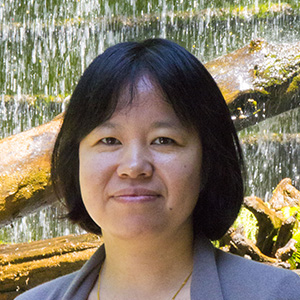
Dr. Hongxia Shan
Department of Educational Studies
Abstract: China–Canada people flows are increasingly characterized by two-way movement, engendering possibilities and problems, particularly for women juggling careers and lives. Within this context, a qualitative study was conducted to trace the migratory and career trajectories of 15 Chinese migrant women between China and Canada. The study finds that to maximize their career and life spaces, the women endeavored to build and mobilize various forms of capital. Not only did they engage in migratory movement, but some of them also acquired Canadian credentials, moved into entrepreneurship and took up transient jobs. The utility and futility of women’s efforts point to “games” of differentiation emanating across fields, particularly along the lines of gender, race and class that were invoked to produce transnational spaces where existing power relations were simultaneously challenged and reaffirmed. Conceptually, this paper is informed by the concept of transnational social field and gender, race and class analysis.
Read More: http://amj.sagepub.com/content/early/2016/03/23/0117196816639056.abstract
Shan, H., & Zhao, Q. (2016). The making of transnational social space: Chinese women managing careers and lives between China and Canada. Asian and Pacific Migration Journal, Advanced Online Publication, DOI: 10.1177/0117196816639056
Click here to access the article.
New Publication from Dr. Bedi – A global portrait of counselling psychologists’ characteristics, perspectives, and professional behaviors
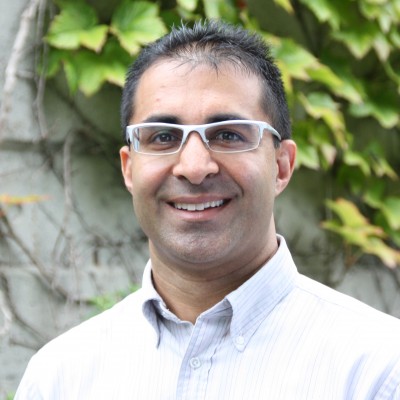
Dr. Robinder Bedi
Department of Educational and Counselling Psychology, and Special Education
Abstract: Counseling psychologists in eight countries (Australia, Canada, New Zealand, South Africa, South Korea, Taiwan, the United Kingdom, and the United States) responded to survey questions that focused on their demographics as well as their professional identities, roles, settings, and activities. As well, they were asked about satisfaction with the specialty and the extent to which they endorsed 10 core counseling psychology values. This article reports those results, focusing both on areas in which there were between-country similarities as well as on those for which there were differences. These data provide a snapshot of counseling psychology globally and establish a foundation for the other articles in this special issue of the journal.
Read More: http://www.tandfonline.com/doi/abs/10.1080/09515070.2015.1128396
Goodyear, R., Lichtenberg, J., Hutman, H., Overland, E., Bedi, R., Christiani, K., Di Mattia, M., du Preez, E., Farrell, B., Feather, J., Grant, J., Han, Y., Ju, Y., Lee, D., Lee, H., Nicholas, H., Nielsen, J. J., Sinacore, A., Tu, S., & Young, C. (2016). A global portrait of counselling psychologists’ characteristics, perspectives, and professional behaviors. Counselling Psychology Quarterly, Advanced Online Publication, DOI: 10.1080/09515070.2015.1128396
Click here to access the article.
New Publication from Dr. Puterman – Predictors of HIV testing among men who have sex with men: a focus on men living outside major urban centres in Canada

Dr. Eli Puterman
School of Kinesiology
Abstract: Men who have sex with men (MSM) represent almost half of new HIV infections in Canada each year. However, the vast majority of research on HIV testing among MSM has been conducted in major urban centres. The present study addressed this gap by investigating HIV testing behaviour and predictors of HIV testing among MSM living outside major urban centres, in the Interior of British Columbia. An anonymous online survey of 153 MSM assessed HIV testing behaviour and psychosocial factors that may impact HIV testing (internalized homophobia, disclosure to healthcare providers (HCPs) of same sex attraction, and gay community involvement). Almost one-quarter (24%) had never been tested and over one-third (35%) had not disclosed same sex attraction to HCPs. Internalized homophobia was associated with a lower likelihood of HIV testing, and this relationship was partially explained by the fact that those high in internalized homophobia were less likely to disclose same sex attraction to their HCPs. Neither formal nor informal involvement in the gay community was related to HIV testing, and both types of involvement were relatively low in our sample. Further research is needed to better understand the distinctive health issues facing MSM living outside major urban centres.
Read More: http://www.tandfonline.com/doi/abs/10.1080/09540121.2016.1164288
Holtzman, S., Landis, L., Walsh, Z., Puterman, E., Roberts, D., & Saya-Moore, K. (2016). AIDS Care, 28(6): 705-711. DOI: 10.1080/09540121.2016.1164288
Click here to access the article.
New Publication from Dr. Taylor – Vocational Education in Canada

Dr. Alison Taylor
Department of Educational Studies
About the book: How best to educate youth for the world of work has long been a subject of discussion. In more recent times, the so-called phenomenon of “Baristas with B.A.,” the “knowledge economy” and alarm over youth who are not in education, employment, or training (“NEETS”) have been the focus of policy. The past decade has seen a flurry of reports, media opinions, and ongoing reform initiatives. Even so, debate and disagreement persists. Many reports, in fact, are contradictory; no clear picture of how reforms should be organized has emerged.
Professor of sociology of education Alison Taylor has conducted much research into policies and practice related to vocational education and education reform. Taylor traces the history of vocational education in Canada and surveys more recent initiatives, considering how successful they have been and where weakness have arisen. Canada, she argues, inherited from the UK a strong “academic/vocational” division in curriculum, which serves no students well. While the German VET system, known to have stronger support for student transitions, warrants consideration, the context is quite different from that of Canada.
Behind questions such as how education should respond to labour market demands, which skills, and what level of skills is needed Taylor sees deeper issues. Such issues include the following: What knowledge is the most valuable, who has access to it, and what agendas are fuelling the debate? Education and employment are unlikely to intersect in a straightforward manner, but there are important linkages to be made. Taylor argues for a rich and deep vocational education for youth, which prepares and equips them for working life by exploring the interconnections between practical and theoretical knowledge. Such a connective learning approach would help students develop concepts, ideas and skills that can be generalized across settings and would help youth adapt to changing circumstances by encouraging lifelong learning.
The connective approach aligns well with a critical pedagogy of work experience, whereby students are provided with the knowledge, skills, and abilities needed to both understand and participate in the political dynamics of the changing workplace. Drawing on the latest research from a range of reports and other sources of data, Taylor contributes to the discussion about preparing youth for work by considering the expectations placed on schools, how schools have responded to these expectations over time, and how they should respond in the future.
Read More: http://www.oupcanada.com/catalog/9780199009985.html
Taylor, A. (2016). Vocational Education in Canada, Oxford: Oxford University Press.
Click here to access the book.
New Publication from Dr. Stack – Global University Rankings and the Mediatization of Higher Education

Dr. Michelle Stack
Department of Educational Studies
About the book: Higher Education Institutions simultaneously critique and participate in national and international rankings of universities. However, this creates a difficult situation since if universities do participate in rankings they acquiesce to a system based in media logics that has little to do with academic norms of research. If they do not participate in the rankings they risk losing public funding, students and donors in an increasingly competitive and globalized environment. This book delves into the influence of journalists, business tycoons and multinational corporations in defining what world class is and how it will be measured. Rankings provide us with a rich study for understanding how universities define, deploy and manage their assets and liabilities in a mediatized globalized economy.
Read More: http://www.palgrave.com/us/book/9781137475947
Stack, M. (2016). Global University Rankings and the Mediatization of Higher Education, London: Palgrave MacMillan.
Click here to access the book.
New Publication from Dr. Butterwick – Women, Adult Education, and Leadership in Canada
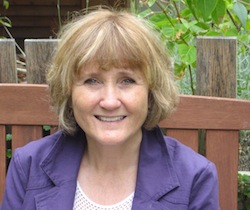
Dr. Shauna Butterwick
Department of Educational Studies
About the book: There has never been a volume documenting the initiatives and accomplishments of women in adult education and leadership in Canada. This edited volume seeks to redress this imbalance. The contributing authors to this volume are scholars, researchers, community educators, students, and activists. They are themselves leaders in the cause of adult education, continuing a tradition set by the early feminist educators and activists in the field.
Read More: http://new.thompsonbooks.com/higher-ed/adult-education/women-adult-education-and-leadership-in-canada-9781550772487/
Clover, D. E., Butterwick, S., & Collins, L. (Eds) (2016). Women, Adult Education, and Leadership in Canada, Toronto, ON: Thompson Educational Publishing.
Click here to access the book.
New Publication from Dr. Butterwick – Working the Margins of Community-Based Adult Learning

Dr. Shauna Butterwick
Department of Educational Studies
About the book: This volume gathers stories about how various art and creative forms of expression are used to enable voices from the margins, that is, of underrepresented individuals and communities, to take shape and form. Voice is not enough; stories and truths must be heard, must be listened to. And so the stories gathered here also speak to how creative processes enable conditions for listening and the development of empathy for other perspectives, which is essential for democracy. The chapters, including some that describe international projects, illustrate a variety of art-making practices such as poetry, visual art, film, theatre, music, and dance, and how they can support individuals and groups at the edges of mainstream society to tell their story and speak their truths, often the first steps to valuing one’s identity and organizing for change. Some of the authors are community-based artists who share stories thus bringing these creative endeavors into the wider conversation about the power of arts-making to open up spaces for dialogue across differences. Art practices outlined in this book can expand our visions by encouraging critical thinking and broadening our worldview. At this time on the earth when we face many serious challenges, the arts can stimulate hope, openness, and individual and collective imaginations for preferred futures. Inspiration comes from people who, at the edges of their community, communicate their experience.
Read More: https://www.sensepublishers.com/catalogs/bookseries/international-issues-in-adult-education/working-the-marges-of-community-based-adult-learning/
Butterwick, S., & Roy, C. (Eds) (2016). Working the Margins of Community-Based Adult Learning, Rotterdam: Sense Publishers.
Click here to access the book.
New Publication from Dr. Zumbo – Validity as a Pragmatist Project: A Global Concern with Local Application

Dr. Bruno Zumbo
Department of Educational and Counselling Psychology, and Special Education
About the book: Despite prodigious developments in the field of language assessment in the Middle East and the Pacific Rim, research and practice in these areas have been underrepresented in mainstream literature. This volume takes a fresh look at language assessment in these regions, and provides a unique overview of contemporary language assessment research. In compiling this book, the editors have tapped into the knowledge of language and educational assessment experts whose diversity of perspectives and experience has enriched the focus and scope of language and educational assessment in general, and the present volume in particular. The six ‘trends’ addressed in the 26 chapters that comprise this title consider such contemporary topics as data mining, in-class assessment, and washback. The contributors explore new approaches and techniques in language assessment including advances resulting from multidisciplinary collaboration with researchers in computer science, genetics, and neuroscience. The current trends and promising new directions identified in this volume and the research reported here suggest that researchers across the Middle East and the Pacific Rim are playing—and will continue to play—an important role in advancing the quality, utility, and fairness of language testing and assessment practices.
Read More: http://www.cambridgescholars.com/trends-in-language-assessment-research-and-practice
Stone, J., & Zumbo, B. D. (2016). Validity as a Pragmatist Project: A Global Concern with Local Application. In V. Aryadoust & J. Fox (Eds), Trends in Language Assessment Research and Practice: The View from the Middle East and the Pacific Rim, (pp. 555-573) Newcastle Upon Tyne: Cambridge Scholars Publishing.
Click here to access the book.
New Publication from Drs. Hodges and Crocker – Sport Commitment and Deliberate Practice among Male and Female Triathletes

Dr. Nicola Hodges
School of Kinesiology

Dr. Peter Crocker
School of Kinesiology
Abstract: Performance times in triathlons and long distance swim events can be reliably predicted from hours in sport-specific deliberate practice activities (Hodges et al., 2004). In the current study we examined whether commitment to the sport could be a possible mediator of practice and subsequently performance. Recreational triathletes of varying skill levels, sex and age (N=90) were surveyed about their current practice habits as well as ratings for current levels of commitment based on Scanlan et al. (1993)’s sport commitment model. Current practice behaviours as ascertained from practice history questionnaires and yearly periodization schedules, pertaining to both hours and intensity of practice, were positively related to sport commitment in this sample. Past practice amounts (i.e., accumulated practice and years of involvement) were not significantly related to sport commitment, although they did significantly relate to performance times, supporting previous research. Commitment and current performance times were not related. These data lead us to conclude that sport commitment is a good predictor of current behaviours, but that it appears to only be a transient measure, showing little to no relationship to past practice habits and current levels of performance. In future research it will be important to track practice and sport commitment over a longer time period to both ascertain the direction of this relationship (i.e., antecedent or consequence of sport commitment) and whether commitment to the sport has any predictive validity with respect to future practice amounts (and ultimately performance).
Read More: http://www.cabdirect.org/abstracts/20163104436.html;jsessionid=80C294B0ED7B338BE7ADC75F9A334D75
Hodges, N. J., Augaitis, L., & Crocker, P. R. E. (2016). Sport Commitment and Deliberate Practice among Male and Female Triathletes. International Journal of Sport Psychology, 47(1), 652-665. DOI: 10.7352/IJSP 2015.46.652
Click here to access the article.












